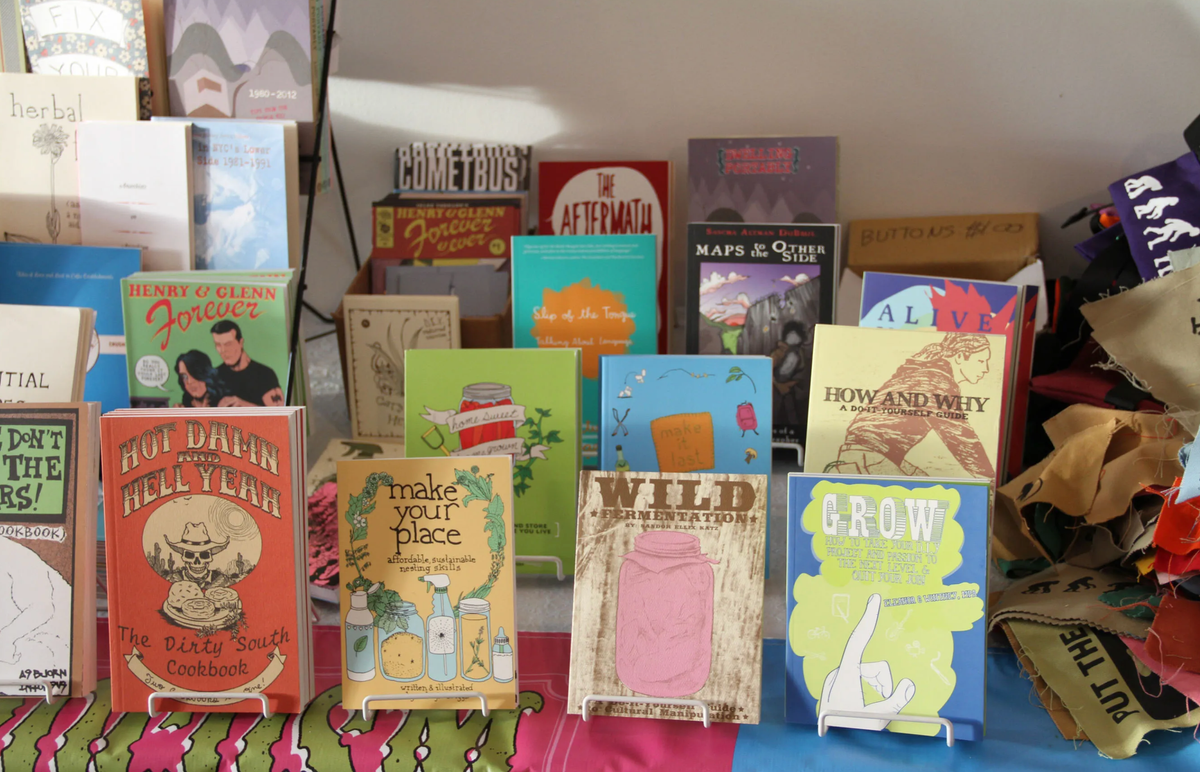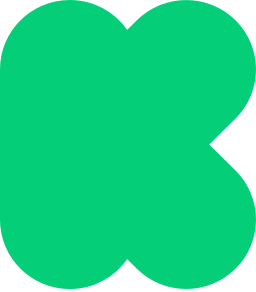Planning Your Perfect-Sized Kickstarter Book Project
Gold-leaf fantasies and softcover realities: a comprehensive guide to planning your first Kickstarter book project by creator Elly Blue.

By the time you read this, I’ll have run 40(?!) successful publishing projects on Kickstarter. (And one that didn’t fund, but still taught me a lot.)
This means I get a lot of emails about other people’s book projects. There’s a common theme among these projects: people are dreaming big. You’ll find first-time creators trying to raise $20,000, $40,000, $60,000, $80,000, and more on Kickstarter to produce gorgeous full-color hardcover books — sometimes with elements like embossing, gold leaf, and custom paper.
Don’t get me wrong, I love big, beautiful, fancy books. I want to run my fingers over their textured covers and flip through their pages, marvelling at the art inside. And they can make a lot of sense, especially for genres like cookbooks, children’s picture books, and fine art books, where these expensive production choices are the norm.
For most of us, starting smaller, learning the trade, and setting ourselves up for long-term fulfillment is the way to go, even if it means setting aside some gold-leaf fantasies.
But none of this means that you can afford to publish this kind of book, or that your target readership can afford to buy it. Even as an experienced traditional-format book publisher with a stable company and a staff of 14, such books are typically too pricey — and risky — for us to attempt. Maybe you’ll eventually find your groove in the world of big, colorful hardcovers. But to learn the art of publishing — and crowdfunding — starting with a simpler, smaller project is worth its weight in gold inlay.
Keep reading for some tips I’ve picked up along the way that may help you turn your publishing project idea into a successful Kickstarter campaign.
Know your motivation.
Why do you want to publish a book? Figuring this out will sustain you through your Kickstarter project and whatever happens next. Are you trying to prove your worth, leave a legacy, or check something off your bucket list? These are all valid reasons — but what’s in it for the reader?
Goals that appeal to readers include: wanting to share your specialized, hard-won knowledge with the world; wanting to participate in a community with shared passions; offering an affordable, mass-produced version of a more expensive service, like coaching or public speaking; or otherwise fulfilling an unmet need that readers have. In most cases, you can serve all of these needs in a pamphlet or paperback with relatively low production values.
Ultimately, if you have big dreams of creating books with fancy production values, ask yourself the tough questions: do you want to produce a collectible art object for rich people (and for your family members who feel like they have no choice but to shell out), or do you want to build something lasting that will change your life?
Do your research (a.k.a. go to the bookstore).
Before embarking on any publishing project, you’ll first want to develop the hell out of your book. This involves a lot of research. Go to the bookstore and find books that appeal to a similar audience to yours, that are doing well, and — this part is important—that are published by small, independent publishers. These are the books to emulate. Spend some time with them and take notes. How many pages do they have? What do the covers look like? How much do they cost? Is there any information on the back cover or indicia page about how and where they’re printed? Read the acknowledgments to get a sense of who’s involved. Is the author independently wealthy? Is the press a hobby press, or are they running a viable business?
You’ll want to find what my partner, Microcosm’s founder, Joe Biel, calls a “muse book”—one that is similar to yours in topic and market and is created by people who have similar access to resources as you do. It shouldn’t be identical; your book has to serve a unique need. But if you can’t find any books comparable to yours, rethink your plan.

Remember that it’s OK to start small.
Starting your publishing career with a photocopied zine, chapbook, or pamphlet is a time-honored tradition. The format comes with many advantages: mistakes are relatively cheap to fix, your initial costs are low, and so is the amount you have to raise. Unless you already have ready access to a moneyed community, a $15 paperback is going to sell better than a hardcover in the long run (and take up way less room in your crawl space). And as a result, starting smaller helps you to build up an audience and a community around your work and the passions behind it.
I’m so glad that I started small, because it allowed me to learn and build and grow at a reasonable pace.
When I funded my first feminist bicycle zine on Kickstarter, I didn’t know how many people would be willing to pay $4 a pop to read my ranting thoughts. To my delight, 46 people did, most of them strangers! I raised 157 percent of my $300 goal—which was good, because I had only asked for enough to pay for offset printing 1,000 copies, not taking postage, envelopes, tape, or my time into account. I’m so glad that I started small, because it allowed me to learn and build and grow at a reasonable pace.
Get a printing quote.
This part is daunting, but it’s not as scary as not having enough money to print your book and fulfill your Kickstarter rewards. Along with ideas for a totally eye-catching title and cover, your bookstore research should have given you a list of specs: page count, trim size, a range of prices you can charge for your book, and type of binding (i.e., paperback, hardcover, or pamphlet). Next, you’re going to want to contact different printers and get quotes for printing various quantities of your book.
A lot of the time, letting yourself see the numbers in reality will cause you to scale down your production values. Sometimes by a lot. And this isn’t necessarily a bad thing.
Plan your rewards with easy fulfillment in mind.
You’re publishing a book. Don’t promise backers that you’ll also produce a bottle opener, a tote bag, a mug, or even—let’s be brutally honest—stickers. Especially do not promise T-shirts or anything that comes in multiple sizes that you have to keep track of and that backers will then want to exchange for a different one! Each of these adds a whole new type of production to learn, design, fund, manage, and ship. Unless you already regularly produce the thing in question, do not add this to your plate. They distract from the main event.
Instead, send book-y things that don’t cost you a lot and are fun to fulfill. In the past, I’ve offered to send backers used copies of books I love and let them choose books for me to read and review. I’ve written letters to their future children, doodled on the inside covers of their books, donated another copy of the book to a local library or community center — stuff that costs me only a little, that furthers the goals of the project, and that builds a sense of community and purpose.

Set the right funding goal.
Before you hit “launch,” make sure you build all of your costs into your project’s funding goal. Kickstarter’s all-or-nothing model is perfect for this because, if you use it properly, it saves you from publishing books you can’t afford. So lock in your costs before you launch your project. Have a signed printer’s quote. Price out your postage and mailing supplies for your rewards. If reaching your minimum goal would require selling more books than you think is possible, rethink your plan and figure out where you can cut costs.
Plan beyond your Kickstarter project.
Publishing is essentially a method for sharing your ideas, experiences, and knowledge. The goal isn’t the form of the book but its function. You’re not producing an object, you’re building a community. This means that your Kickstarter project is just the beginning. If you digitally print 200 books for 200 backers, your book’s life ends when your project does. But if you offset print 2,000 books, you’ll likely pay about the same amount, and you can keep the momentum (and income) going.
Don’t give up on your dream.
Have I just talked you out of the book of your dreams? Sorry about that. Take all of this to heart, please — but remember that you may not be wrong, and that many people have successfully built publishing companies around creating gorgeous, heavily-produced hardcovers.
It’s possible that your book may simply require this format, like if you’re publishing a recently-discovered cache of a famous band’s backstage photos. Or if you’re a celebrity chef and your core customers would actually think less of you for putting out an inexpensive book. Eventually, no matter who you are, once you have some more capital and experience under your belt, you may find good reasons to aim for higher production values on other kinds of books, too.
But for most of us, starting smaller, learning the trade, and setting ourselves up for long-term fulfillment is the way to go, even if it means setting aside some gold-leaf fantasies.

Elly Blue’s Bikes Not Rockets: Feminist Bicycle Science Fiction is live on Kickstarter through August 8, 2018.
